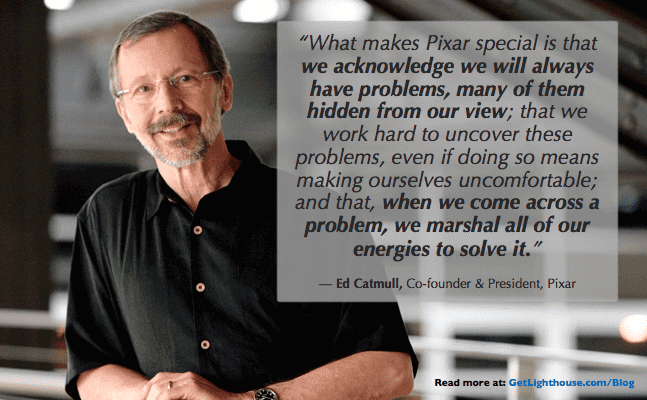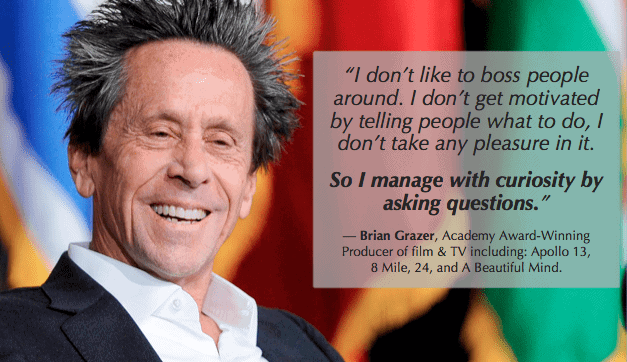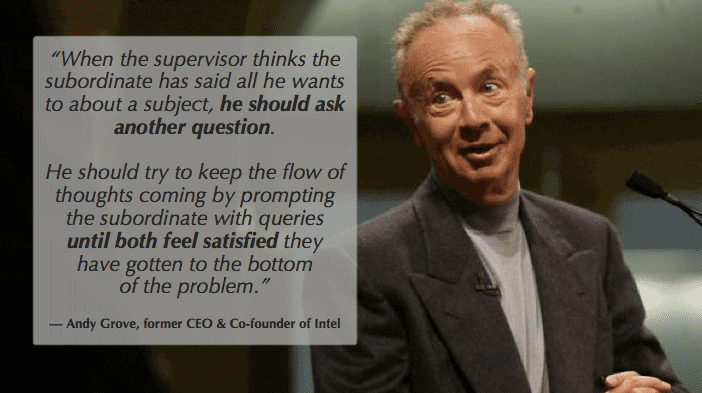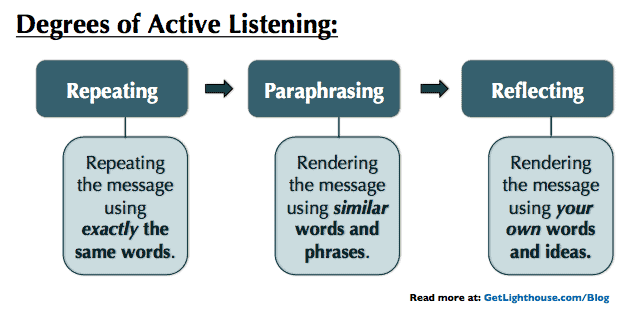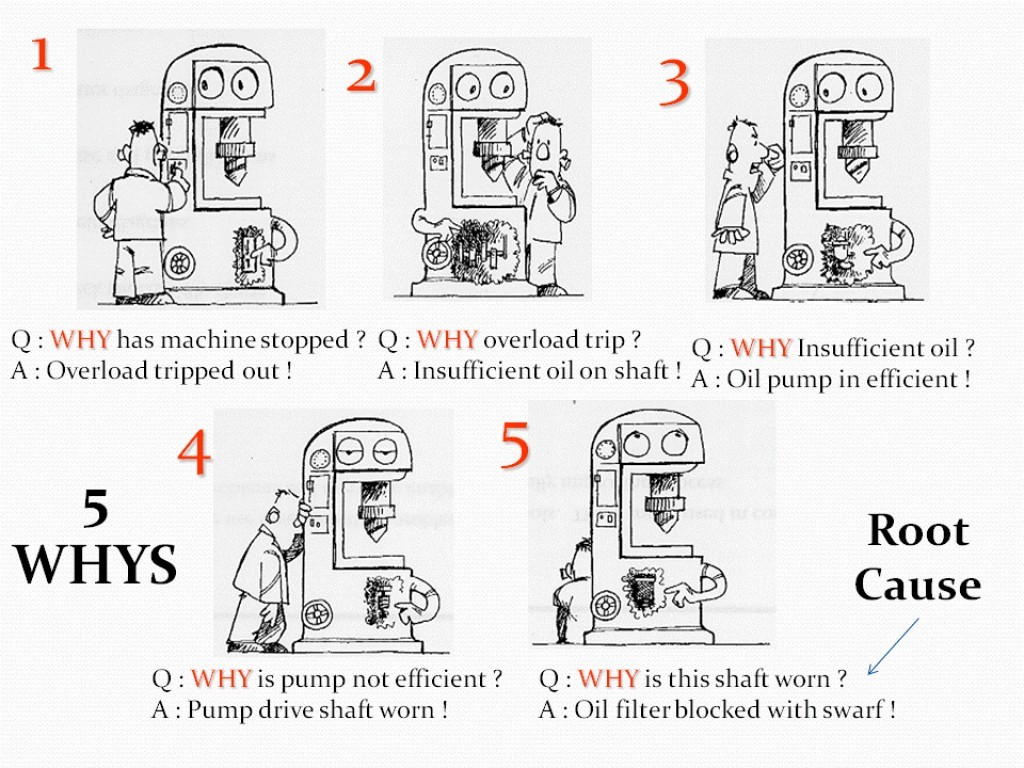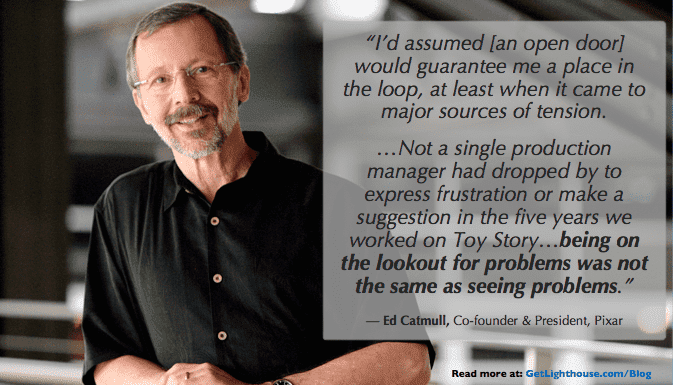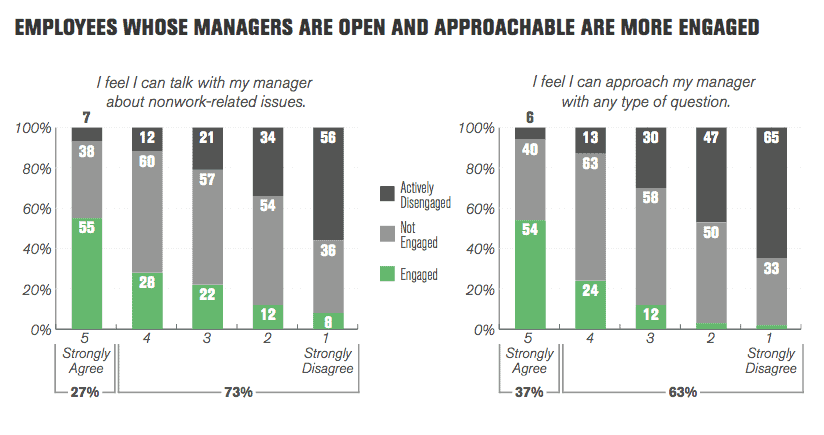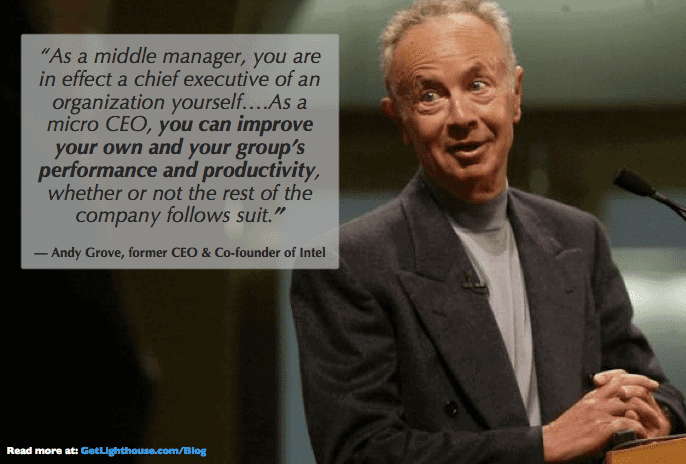As leaders, we are always in management debt. Every decision we make has first and second order effects, many unintended.
Unfortunately, many companies that falter are paved with good intentions that didn't go as planned. The only way to combat this is to have the management debt mindset:
The Management Debt Mindset:
There are always problems, underlying issues, and hidden impacts that as a manager you are unaware of. You must actively search for these problems and work to address them before they grow out of control.
It is this philosophy that has helped make Pixar Animation Studios, the powerhouse of animated films, a great place to work as Ed Catmull, president and co-founder wrote in his book on leadership, Creativity, Inc:
As we wrote in Part 1 of this 2 part series, this problem can manifest itself in many ways that grow to cause deep problems in your company:
- A Team Divided: A few conflicts in team meetings can become team members that hate each other and a team that takes sides.
- Painful Inefficiency: An inconvenience in your process when you're 2 people, can become a nightmare bottleneck when you have 8 people.
- Costly Incompetence: A poor hire will do worse and worse things until they absolutely must be fired, but at great cost to your team or customers.
- Losing a Star: A once star team member that starts feeling bored will slowly go from motivated, to disengaged, to leaving for another job with new challenges.
- Burnout: An overworked employee will at first push through and be okay, but will eventually physically succumb to burnout.
Knowing this, what's a leader to do?!? How do you get, and ideally stay, out of management debt?
Today we aim to answer that. Here's how some great leaders approach management debt:
How Great Leaders Get (and Stay) Out of Management Debt
If you break down what Ed Catmull so succinctly described, there are really two critical pieces to addressing management debt:
- Actively seek out problems, no matter the discomfort.
- Work relentlessly, using all resources, to resolve it.
Let's look at what great leaders running multi-million (and billion) dollar companies are saying about these pieces:
1. Actively seek out problems, no matter the discomfort
If management debt was easy, no one would ever get overwhelmed by it. The problem is, as a manager or leader, you can't see everything that's going on, or what all your people are thinking. You have to ask.
Lead by Asking Questions
It would be great if your team members would come to you with problems, complete with a breakdown of the root causes, and their long term impact. Unfortunately, that's not how it works.
The best way to start to uncover problems that lead to management debt is to ask questions. That's the management approach of Academy Award winning producer Brian Grazer as he wrote in his book, aptly named A Curious Mind:
When your gut instinct tells you something is off, or you feel something isn't working as well as you hoped, act on it. Ask to learn more about what's going on and for other people's perspectives. There's a good chance that a small feeling you detect as a manager is felt much more strongly by those on your team closer to the issue.
Don't be afraid to get a little uncomfortable with your questions. It beats the alternative of letting an issue fester and grow. Talking about problems and taking them head on is a good example to set within your culture.
Bring an open mind and positive attitude
At the same time, you want to avoid a witch hunt. Questions are to learn and understand an issue. They are *not* an interrogation.
If people feel like you shoot the messenger, you won't have many messengers for long. This is why Indra Nooyi, CEO of PepsiCo, suggests a positive mindset when asking questions:
When you ask questions with an intent to learn, you will discover many of the kinds of issues that are otherwise hidden from you.
Be a great listener
Asking questions isn't enough. You have to really listen, which is not as easy as you might think.
Listening is one of the most important skills of a leader, as SoulCycle's CEO, Melanie Whelan reflected in a New York Times interview.
One of the most tempting things to do as a leader is to jump at the first bit of information you hear. While it may be a problem, it's likely not the root cause. You may also be missing essential context, or a deeper issue, if you don't ask good follow up questions.
This is why Andy Grove, legendary leadership author and former CEO & co-founder of Intel, wrote in High Output Management:
So what kinds of questions should you ask if you're listening well? Active listening and 5 Why's are great places to start.
Active Listening
Often, the best question you can ask is to clarify what you've just heard. There is usually more detail to what they told you than their first answer to you. This is where active listening comes in.
There are 3 stages to active listening, with the best being reflecting:
When you put what you think you heard from them in your own words, you develop a shared language with your team member about the problem.
Don't expect to be right on your first try. It's actually a good thing if you're wrong; it will open up more discussion to clarify what your team member meant. The added detail that comes from this can make all the difference in getting to the root cause.
5 Why's
Another great approach to "asking another question" is to use 5 why's root cause analysis. That means drilling deeper by repeatedly asking "Why" during your conversation. Think of the machine in this example below as your company or team:
The beauty of 5 Why's is that you get to the root cause; rather than making a bunch of potentially expensive or time consuming surface fixes, you find the most important issue to address.
As you get better at using 5 Why's, it will become a very high leverage process for you as a leader. Often, in fixing this root cause, the other problems go away, saving you working on them. It also will connect problems across people and teams as you realize the same issue affects many of them in different ways.
Check in regularly with one on ones
If you wait for problems to find you, they never will. As we've written before, open door policies do not work. Adding color to Ed Catmull's comment above about seeking out problems, he wrote later in Creativity, Inc about how his open door failed him at Pixar:
If you intend to actively seek out problems, you need to commit a part of your regular schedule to that goal. The best way to do that is to have regular one on ones with all of your team members, and encourage other leaders you work with to do the same.
If you're new to one on ones, this post highlights the fundamentals, which include the following:
- Schedule the same time every 1-4 weeks with each person
- Adjust your frequency based on their Task Relevant Maturity
- Avoid status updates at all costs (it's a huge waste)
- Bring good questions to ask
- Set aside a full hour
That last item, to schedule a full hour, is the most important when you are considering management debt.
An hour?!? Yes, an hour
Great one on ones provide many benefits for you as a leader. By setting aside a full hour for your one on ones, you insure you make the most of them.
There are so many topics you can cover to reveal problems and improve morale in your one on ones. If you shortchange the time set aside for them, you'll never get the chance to cover them all.
When it comes specifically to management debt, the hour time frame becomes critical. As Andy Grove, former CEO of Intel, wrote:
"The subordinate must feel that there is enough time to broach and get into thorny issues. Look at it this way. If you had a big problem that you wanted to kick around with your supervisor - the person whose professional interest in the matter is second only to yours - would you want to bring it up in a meeting scheduled to last only 15 minutes? You would not."
By scheduling a full hour, you make thorny issues safe to explore with plenty of time to talk through them and discuss solutions. You also help avoid the risk of what Grove calls a "zinger":
"The supervisor should also encourage the discussion of heart-to-heart issues during one on ones, because this is the perfect forum for getting at subtle and deep work-related problems... the supervisor should be wary of the "zinger," which is a heart-to-heart issue brought up at an awkward time.
More often than not, these come near the end of a meeting. If you let that happen, the subordinate might tell you something like he's unhappy and has been looking outside for a job and give you only 5 minutes to deal with it."
It can take a while for a team member to work up the courage and comfort to bring up thorny issues to you. You've probably felt this yourself at times with managers you've had.
Often that courage finally comes around the 20-25 minute mark in a meeting. If you only set aside 30 minutes or less for your one on ones, it will never happen, or you'll find yourself with a "zinger" as your phone is buzzing that you need to head to your next meeting.
It's much easier to end a meeting early if you've covered everything than it is to extend one that's run over. At the core, this is why you need to set aside an hour.
---
Asking good questions and being a good listener are skills to be developed like any other. The best way to practice them is by making the most of your one on ones as a place to seek out and address management debt.
If you'd like to read further, these links are great places to start:
- More on asking questions as a key management skill
- Investor & former CEO Ben Horowitz on questions for one on ones
- Over 100 questions you should ask in your one on ones
- Investor & former CEO Jason Lemkin on how not asking leads to turnover
- Step by step advice on how to start one on ones with your team
2. Work relentlessly, using all resources, to resolve it.
You can't fix a problem you don't know about. And once you know about a problem, you have to do something about it.
One of the worst things you can do as a leader is have a heart-to-heart with a team member about a big problem and then do nothing about it. Nothing destroys trust and creates more resentment than feeling like your manager doesn't care about what you have to say, and what is important to you. By not taking action on what you discuss that is the message you send to your team.
Take action
Once you fully understand the root of a problem, you should transition to discussing solutions. When you do, avoid looking for silver bullets.
Instead, break the solution into small pieces. Look for ways to make incremental progress over time, starting today. By doing so, you take advantage of a series of key benefits:
Feel heard:
Even a small action to help alleviate a problem makes it clear to your team member you were listening. Maybe they're moving their desk away from someone they're having problems with, or taking the rest of the afternoon off to clear their head while you talk to others about the issue.
Give hope:
Whatever the issue is, you want them to know it did not fall on deaf ears. The last thing you want is for them to throw up their hands and say, "this is never going to change." That's a recipe for resentment, disengagement, or even potentially their departure. Taking action that they can see helps give them hope that things are getting better.
Build trust:
When you demonstrate to your team that you take action on what they come to you with, it builds trust that they can come to you with problems. This is a reinforcing cycle that gets stronger each time you help them with a problem. As we've learned from Gallup in the past, this is a key part of having an engaged team:
Boost morale:
Researchers Teresa Amabile and Steven Kramer found a fascinating, important key to motivation:
"Of all the things that can boost emotions, motivation, and perceptions during a workday, the single most important is making progress in meaningful work"
As important as progress is on their work projects, realize that these problems and issues you discuss with them about your team and company are just as important. Feeling progress on any of those heart-to-heart discussions will significantly boost their morale and motivation.
It can be intimidating to try to fix a big problem. Instead of worrying about the perfect solution, look for the first things you can do to improve the situation.
Do not underestimate how much even a partial solution to a problem can help. Your team members will give you time to address an issue, especially if they see and feel some progress happening while bigger changes are in the works.
Solve it together
Don't feel like you have to solve everything yourself. If your people are the ones helping you detect problems, then they can also be a part of the solution. This creates a powerful culture of accountability across your team, and helps ensure the best possible solution is found.
At Toyota, their Total Production System includes the rule that any employee can stop the production line if they identify a problem. To help ensure this happens when it should, they specifically train their managers to empower their people. As Steven Spear, a lecturer at MIT's Sloan School of Management wrote in Harvard Business Review:
"[A manager] came out of his training realizing that improving actual operations was not his job—it was the job of the workers themselves. His role was to help them understand that responsibility and enable them to carry it out. His training taught him how to construct work as experiments, which would yield continuous learning and improvements, and to teach others to do the same."
No matter your industry, the people on the front lines doing the work, and seeing the problems you need to address, will have valuable perspectives. Tap into that as you work on solutions; no matter who comes up with the initial idea, they can help you understand any pitfalls to avoid, or reasons why a perfectly reasonable-sounding idea may not work.
The power of "together"
Not only does working with your team on solutions take the pressure off you to have all the answers, you also tap into a powerful psychological principle.
Researchers Priyanka Carr and Greg Walton found that when you gave people a series of challenges, if you framed that their work would be done "together" with others, they worked harder. This was despite them being isolated while doing it, just like those that were told they were working alone. Their results were shocking:
"Participants in the psychologically together category worked 48% longer, solved more problems correctly, and had better recall for what they had seen."
Whether you or any of your team members are the ones doing the work to address a problem, giving everyone the feeling that you're working together on it provides powerful motivation you should tap into.
Lead by example
Your actions speak louder than any words ever can. The best thing you can do for your team is set a strong example.
That means acting in the ways you want others to, and keeping your promises and commitments. You can't be flaky or absent-minded, and expect your team to deliver 100% of the time.
Culture on your team and in your company is fragile. To protect and improve it, requires diligence and commitment in your actions. Ed Catmull reflected on what they learned as he and other leaders worked on the culture at Pixar:
But what if you can't solve the problem? What if some of the issues are "above your pay grade"?
It would be easy to use that as an excuse to throw your hands up and do nothing. You would do something if you could, right?
You are a micro CEO
The perfect solution may be outside your reach depending on where you sit in the hierarchy of your organization. But that does not prevent you from coming up with a solution that makes things better. Remember what Andy Grove says about being a leader:
Constraints breed creativity. If you are limited by budget, influence, or rank in your organization, then stop looking at what you cannot do, and focus on what you and your team can do.
Taking action on a problem does not mean it's always going to be perfect. Sometimes it will be messy, and other times only a partial solution. Just remember, that any progress helps.
Here's a few examples to spark your thinking of how you can help your team despite obstacles:
- A problem team member: Maybe you can't remove someone from a project, but you can minimize their interactions with others on the team by giving them more solo work.
- An employee wants a raise: Maybe you can't promote them, or even give them a raise now, but you can give them some additional work flexibility and start working on adding skills that will earn a raise or promotion later.
- Combating burnout: Maybe the team member can't take the 2 week vacation they really need to recharge, but you can shift some responsibility off of them and check in regularly how they're doing.
When your team sees that you always do your best to help with an issue, they'll be much more likely to continue to help you identify issues that can continue to improve things on your team and stay out of management debt.
---
Taking action is a habit to build into discussions with your team. Not only is it a great way to avoid complaining, it helps foster a culture of everyone doing their part to make things better.
If you'd like to read further, these links are great places to start:
- Stuff isn't culture by Zurb
- How to change the culture on your team
- Book: Andy Grove's High Output Management
- The Leadership Paradox: Why managers must be consistently inconsistent
- Book: Ed Catmull's excellent book on building Pixar, Creativity Inc
What advice do you have for helping managers and leaders stay on top of management debt?


